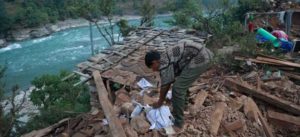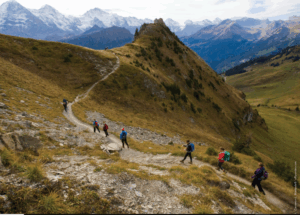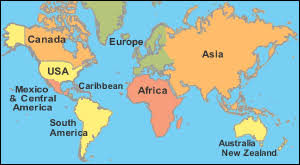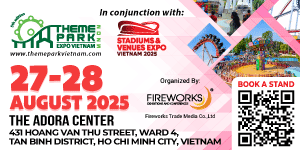PATA looks to next generation

Breaking Travel News catches up with Martin Craigs, newly appointed CEO of PATA, to discuss PATA’s Next Gen initiative and the ASEAN Open Skies agreement and what this would mean for the aviation industry.Extracts of the interview :
Breaking Travel News: How are you finding your new role as CEO of PATA? Has the position met with your expectations?
Martin Craigs: It has surpassed my expectations, in terms of scope, influence and cross cultural communication challenges. That’s a long way to say I am relishing the role, it’s a privilege and a pleasure to be CEO of an organisation with such a distinguished past and bright future.The scope of the job is broader and PATA’s potential to influence is also much more profound than I had initially envisaged.
The challenge is to communicate effectively across so many national cultures, functional constituencies and time zones. Maintaining an insightful dialogue with such a diverse membership is however a challenge I relish.
BTN: What’s on the agenda for PATA this year?
MC: All things Next Generation. Throughout 2012 we are positioning the association as “PATA Next Gen”. Let me stress that this is not about age, it’s about mindset and the intelligence use of new/next generation technology— a new mindset that looks to digital solutions, brave advocacy and bold thought leadership events fully in tune with a social media age.
PATA Next Gen expresses the association’s commitment to a way of doing business that Next Gen thinkers appreciate. It’s about using new technology and media to better deliver topical, timely and strategically linked events. It’s about PATA’s new commitment to advocacy – our desire to make bold statements in the travel trade market place and speak out against obstacles to growth that impact our members’ ability to build their business.
BTN: What do you see as being the single most important challenge facing the Asia Pacific travel & tourism industry today? How are you addressing this?
MC: The biggest challenge depends on perspective and timescale.From a business perspective the biggest challenge is the rise and rise of emerging markets in Asia Pacific and how to tap into them through relevant online marketing. Both emerging markets and new technology are at the centre of all that we do in PATA – what our speakers speak about at events; it’s addressed in our online webinars that are free to members; and we’ve just set up the PATA Future Travel Technology Committee. The 15 or so Committee members will distil the latest technology trends and make recommendations to our members.
Taking a longer view, the biggest global challenge is environmental sustainability and adequate protection of water, forests, bio-diversity. We would however like to remind governments, particularly in Europe that so-called green taxes on airlines (UK-APD and EU-ETS) are neither fairly applied nor transparently allocated. We support IATA’s advocacy in its area and hope to see the EU-ETS issue settled within ICAO and not lead to a very undesirable and unnecessary trade war.
BTN: Your latest results showed a collective increase of 6% year-on-year for international arrivals into Asia/Pacific destinations for October and November 2011. What are your predictions for international tourism arrivals over the next 12 months?
MC: PATA predicts that Asia Pacific destinations will see a year-on-year growth rate of 4-5% in international visitor arrivals (IVAs) during 2012 and this pace of growth will continue until 2014. Strong intra-regional tourism growth supported by consistently rising disposable incomes, coupled with continued expansion of airline seat capacity to new destinations within the region, remain key factors in driving Asia Pacific tourism in the foreseeable future.
BTN: Where do you expect to see the biggest growth in coming months?
MC: Southeast Asia is the star performer in the region with an expected collective gain of around 9% in international visitor arrivals in 2012, dominated in percentage growth terms by Cambodia (+13%) followed by Thailand (+12%) and Lao PDR (+11%). This expansion is in large part driven by the rapidly growing China and India outbound markets.South Asia is another sub-region that is expecting to register a more-than-average growth rate of 7% in 2012.
BTN: Which emerging markets are you looking to target and how?
MC: An emerging market can be a place (such as Vietnam), a demographic (such as the over 60s) or a sector (such as socially responsible adventure travel). We look at all of them – within the restraints of our resources. However, India and China are still the big two that galvanize our membership – specifically emergent middle class urban India and the big urban centres along the eastern seaboard of China. We will also be delivering “Hub City Forums” six times per year. This new event format gets industry leaders and opinion formed together for half a day of focused information exchange.
The first two in Hong Kong (December 12, 2011) and Bangkok (January 30, 2012) touched on emerging market opportunities from established hub’s perspectives.
BTN: In what ways is PATA supporting responsible / sustainable tourism initiatives? Where does this sit on your agenda in terms of priorities?
MC: Integrating sustainable travel models, that leave little or no footprint on the globe, is a priority for PATA. We encourage all of our members to reduce their carbon footprint in that effort.
To make this practical, PATA has teamed up with EarthCheck, the world’s leading environmental management, benchmarking and certification programme; developed for the travel and tourism industry. Through this partnership, EarthCheck has created an online Carbon Calculator for use by PATA members, which lets them estimate their carbon impact and then provides tips on how their emissions may be easily reduced.With the support of EarthCheck we also run monthly free webinars on sustainability.
The excellent sustainable webinars include: February 15: Policy and Procedures (done). Upcoming ones are: May 30: Risk Assessment; June 20: Measurement; July 11: Action ; August 8: How to Implement Sustainable Change ; September 5: Evaluation and Monitoring.
We have also just delivered the first ever conference and travel mart in Bhutan, which is of course a small market but one with unique Gross national Happiness (GNH) characteristics which are closely linked to sustainable tourism initiatives.
Additionally, the successful launch of the China Responsible Tourism Forum (CRTF) in Beijing on December 16, 2011 also shows our commitment to responsible tourism initiatives. Its aim is to stimulate debate between the tourism industry and government on the critical issue of responsible tourism. The sold out forum, organised in cooperation with the Organising Committee of the China International Heritage Towns Exposition, will now be an annual event. This year’s China Responsible Tourism Forum will be held in April 2012, and will introduce the Annual China Responsible Tourism Awards, which will recognize innovative and experiential responsible tourism businesses in China.
BTN: What developments are you seeing in the air transport sector? Is the ASEAN open skies agreement still on track for 2015? What would a single aviation market mean for ASEAN members?
MC: There are significant developments in aviation across the Asia Pacific region, many of which are being driven by intra-regional demand, the expansion of the LCC network, improved road/rail access (the Asian Highway etc.), and of course a burgeoning middle-class driving travel consumption. The introduction of more of the Boeing 787 Dreamliners, and latter the Airbus A350, will also enable the opening of many more point-to-point long haul thin traffic routes. In short, new access points for affluent travellers. Santiago, Singapore, Hong Kong, and Helsinki would be logical routes for the B787 or A350.
The establishment of the ASEAN Economic Community in 2015 and beyond will also stimulate intra-ASEAN travel demand, especially if it is accompanied with a streamlined visa system or indeed the possible relaxation of visa requirements for ASEAN residents.
The ASEAN open skies agreement is still on track and indeed some routes have already been opened. While not all players will be ready by 2015, the agreement will certainly continue to develop over the years, as originally planned and expected.
A single aviation market will bring challenges to some airlines of course but if market forces are allowed to operate without policy retardants, the end result will be significant gains for the consumer.
Customer service, new product innovation and the constant delivery of appropriate services will allow such gains to be properly leveraged for those operators who adapt to those basic demands.
BTN: What traveller trends are emerging in Asia Pacific? What do today’s travellers expect?
MC: Conscientious travel. Triple bottom line thinking. Sustainability. The desire for authentic travel experiences. The ability to ‘speed up’ or ‘slow down’ their holiday on a whim.
BTN: What does the future look like for PATA?
MC: Travel and tourism is such a rapidly changing industry, not least because it is now intimately tied into new technology on mobile devices that now complement and define the travel experience. Precisely predicting the future with its constant external shocks, technological changes, crises and economic booms and slumps is effectively impossible. However, PATA has 60 years of travel industry engagement and leadership experience. We pledge to stay relevant to our members’ needs – and sometimes helping members define what their future business needs are.
PATA will also continue to play to its strengths – which means we will represent both the private and public sectors on an equal footing. We will remain the leading authority and voice on travel and tourism in Asia Pacific. We are excited by the future opportunities but recognise its challenges. (Courtesy : BTN )














